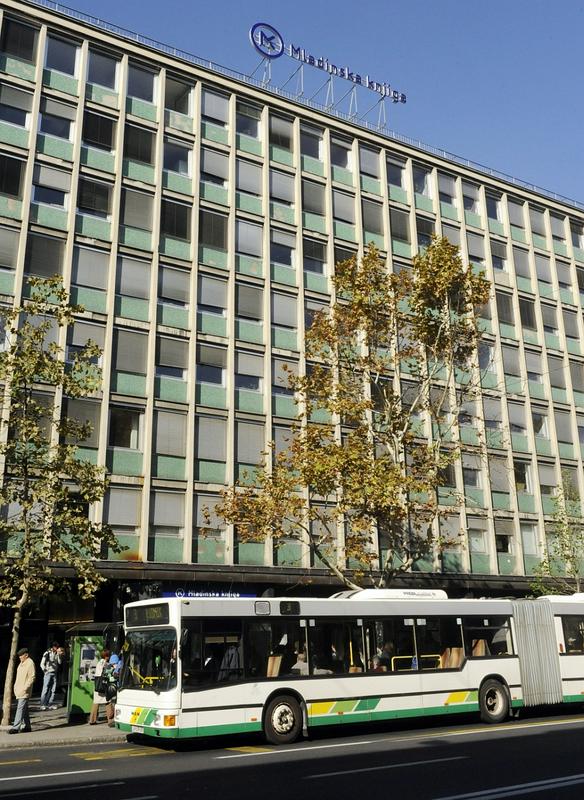
The Konzorcij building lies in the heart of the Slovenian capital. Best known for being the home of a major bookstore, the structure, an example of the postwar modernist style, is rather undistinguished. But the spot is now occupied by Konzorcij was once occupied by a Baroque palace – a building that was torn down in an attempt to modernize Ljubljana.
When constructed in 1752, the Kozler Palace was one of the most attractive Baroque building in Ljubljana. Originally built for a wealthy attorney, it was surrounded by extensive gardens. As the city grew, the gardens were replaced by other buildings and in the 19th century, the palace was bought by a merchant named Janez Kozler, after whom the building was named.
For many years, the area around the Kozler Palace didn’t change much, but after World War II, the building’s fate was sealed by what was happening around it: Ljubljana began to see a rapid increase in the number of cars. Authorities were determined to widen the road – Titova Cesta, now Slovenska Cesta – that went past the Kozler Palace. They also wanted to give a modern modern appearance to what was now the capital of a Socialist Republic. Ignoring several plans by leading architects that would have preserved the Kozler Palace, the authorities instead decided to demolish the building. It was torn down in early 1961.
The authorities tried to put an end to criticism by promising that the building would be reconstructed at Volčji Potok, an arboretum not far from Ljubljana. Bits and pieces were taken to the park, but the reconstruction never went underway. The remains were ultimately looted, and one of Ljubljana’s most famous landmarks was gone forever.
The destruction of the Kozler Palace is still considered by many to be one of the biggest errors of Slovenian urban planning. It is often cited as an example of how quickly centuries-old heritage can be destroyed in the name of progress. Whenever a historic building is set to be torn down in Ljubljana, conservationists point out to the example of the Kozler Palace – an irreparable decision still regretted after more than 55 years.

































































